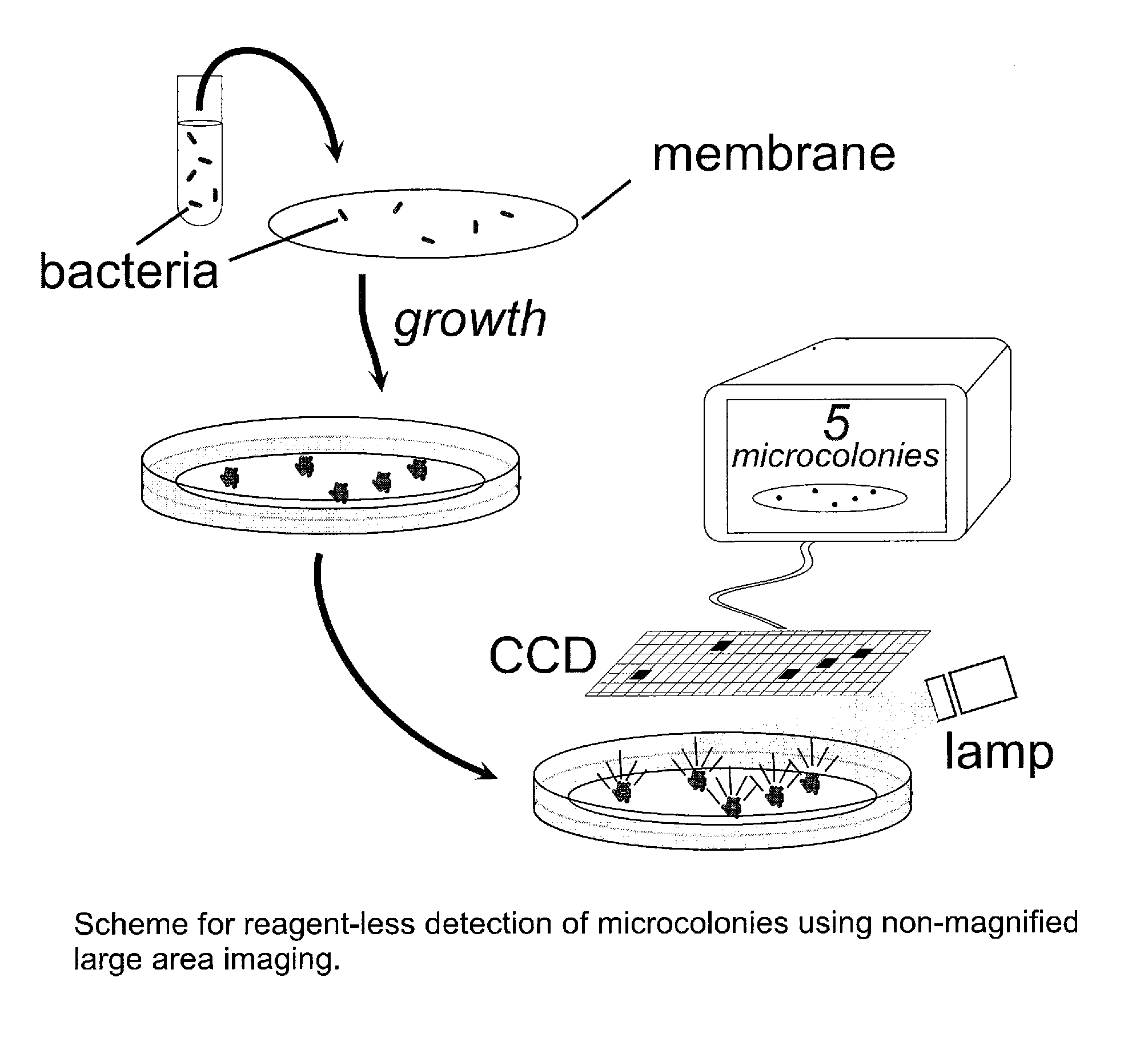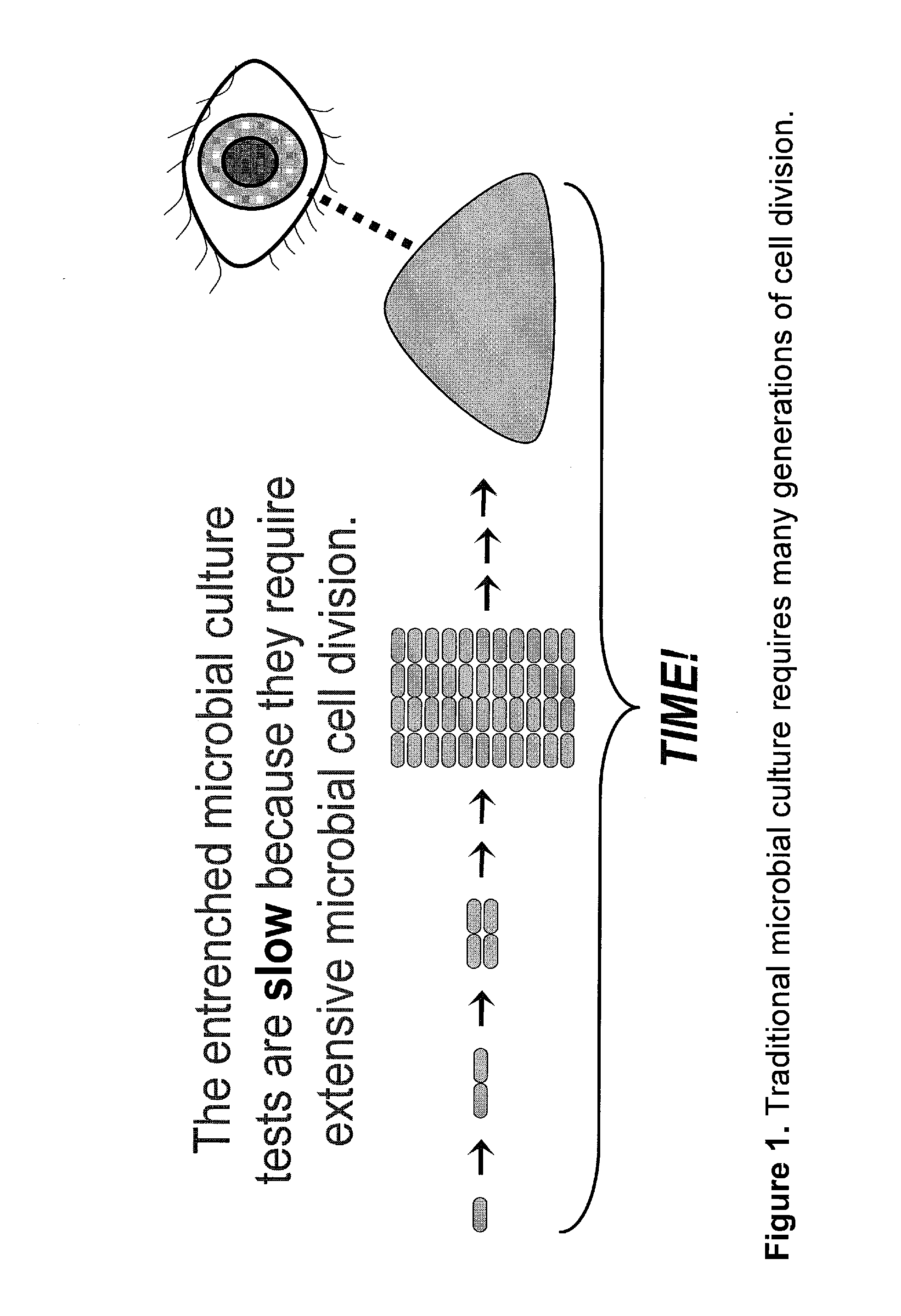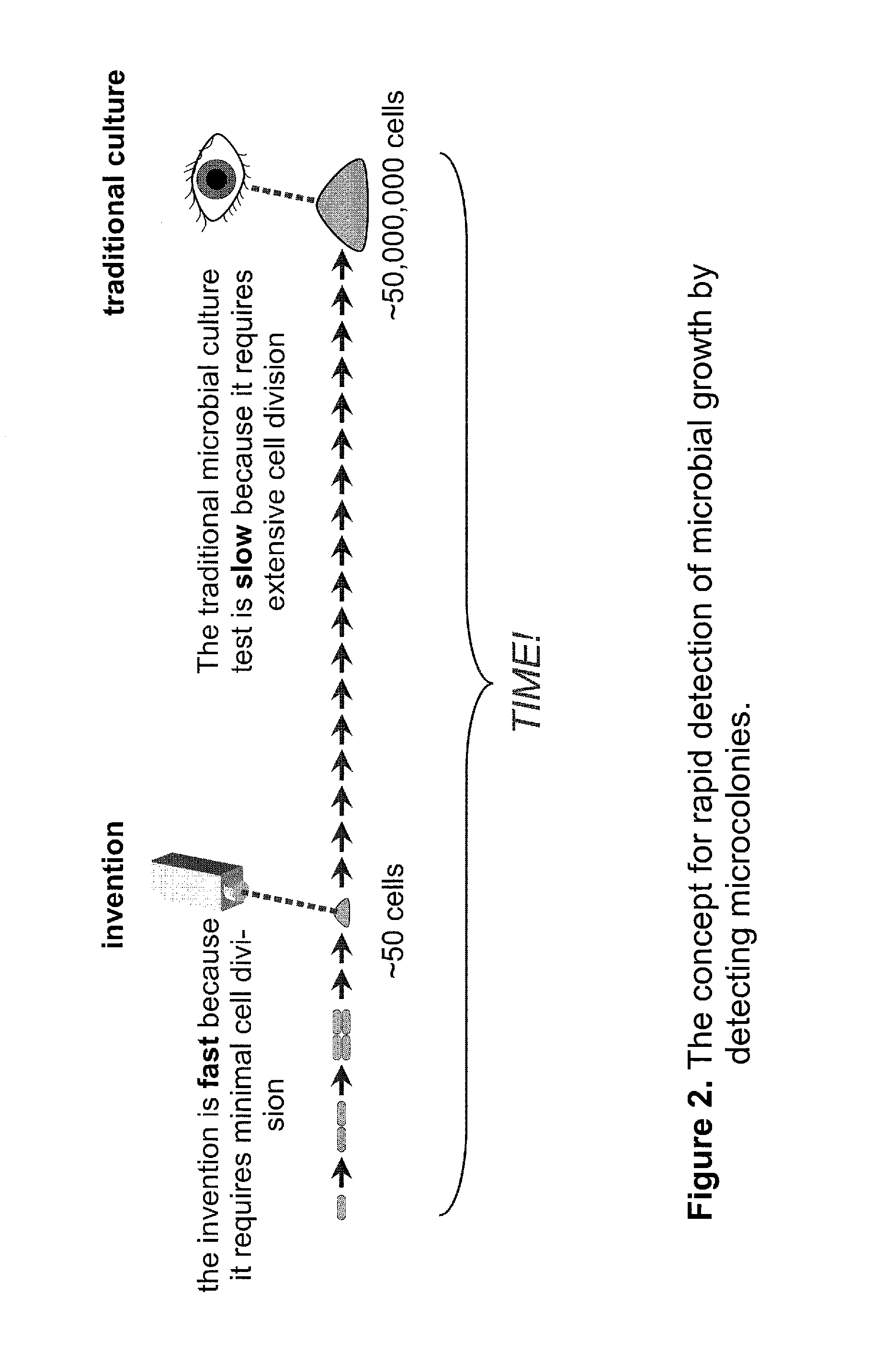Rapid detection of replicating cells
a technology of replicating cells and detection time, applied in the field of replicating cell detection, can solve the problems of not substantially increasing the sensitivity or decreasing the time, bacteria that are very sensitive to antibiotics cannot grow, and the broth becomes visibly cloudy in less than 24 hours, so as to reduce the time needed to achieve results, analyze the entire membrane efficiently, and analyze large sample volumes efficiently
- Summary
- Abstract
- Description
- Claims
- Application Information
AI Technical Summary
Benefits of technology
Problems solved by technology
Method used
Image
Examples
example 1
Detection and Identification of Bacterial Microcolonies Using Non-Magnified Large Area Imaging
[0211]Background and objectives: Detection of microbial growth is at the core of both clinical microbiology (e.g., bacterial identification and antimicrobial susceptibility testing) and industrial microbiology (e.g., mandated sterility testing), but the commonly used methods are slow. The consequent delays in analysis cause needless death and suffering in clinical situations and exact a large financial cost in industry.
[0212]Using non-magnified large area imaging to detect individual microcolonies exploits the advantages of microbial culture while avoiding the substantial disadvantages of traditional and emerging methods. Advantages of in situ replication analysis using the invention are: speed; ease of multiplexing (scanning for more than one microbe); and the ability to detect and identify without sacrificing microcolony viability (essential for efficient antimicrobial susceptibility test...
example 2
Autofluorescence-Based Detection of Bacterial Microcolonies Using Non-Magnified Large Area Imaging
[0216]Background and objectives: The importance of methods that detect microbial growth and the limitations of current methods are discussed in the Background section. This example demonstrates a very simple yet powerful method based on the present invention that rapidly detects the growth of bacterial microcolonies. The method relies on the intrinsic fluorescence (autofluorescence) of the target cells for generating detectable signal. Thus, this method does not use category-binding molecules or exogenous signaling moieties to achieve non-magnified large area imaging of microscopic target cells. The advantages of reagent-less non-destructive enumeration include generation of purified cultures (for microbial identification and antibiotic susceptibility testing, improved method validation, and the ability to follow microbial growth over time (for object discrimination and growth kinetics)...
example 3
A Simple Method for Validating a Rapid Reagent-Less Microbial Enumeration Test Using an Internal Comparison to the Traditional Culture Method
[0220]Background and objectives: Proving the equivalence of a new microbiological test to the “gold standard” method is an essential task for both the developers of new methods and their customers. Formalized validation requirements are generally codified in governmental regulations that guide the introduction of new microbiological methods in industry and healthcare. New methods for microbiological testing in the pharmaceutical industry have sometimes floundered because of the difficulty of proving equivalence to the accepted methods. The goal of this example is to demonstrate a simple method for proving the equivalence of a test based on the invention to the traditional microbial culture test.
[0221]Experimental methods. E. coli MG1655 cells were grown and analyzed as in Example 2. After imaging the microcolonies, the filter was re-incubated a...
PUM
| Property | Measurement | Unit |
|---|---|---|
| diameter | aaaaa | aaaaa |
| diameter | aaaaa | aaaaa |
| diameter | aaaaa | aaaaa |
Abstract
Description
Claims
Application Information
 Login to View More
Login to View More - R&D
- Intellectual Property
- Life Sciences
- Materials
- Tech Scout
- Unparalleled Data Quality
- Higher Quality Content
- 60% Fewer Hallucinations
Browse by: Latest US Patents, China's latest patents, Technical Efficacy Thesaurus, Application Domain, Technology Topic, Popular Technical Reports.
© 2025 PatSnap. All rights reserved.Legal|Privacy policy|Modern Slavery Act Transparency Statement|Sitemap|About US| Contact US: help@patsnap.com



